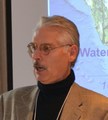ANNUAL REPORT FROM THE EXECUTIVE DIRECTOR (2017): “New Societies Act provides the Partnership with clarity regarding our identity as a government-funded entity,” stated Kim Stephens

“Now that the Societies Act has provided the Partnership with clarity regarding our identify, it allows the Board of Directors to focus on the Partnership mission – which is to serve as the hub for a ‘convening for action’ network in the local government setting, and to deliver the Water Sustainability Action Plan for British Columbia through partnerships and collaboration,” wrote Kim Stephens. “The Partnership is funded exclusively by government and provides services to government.”







